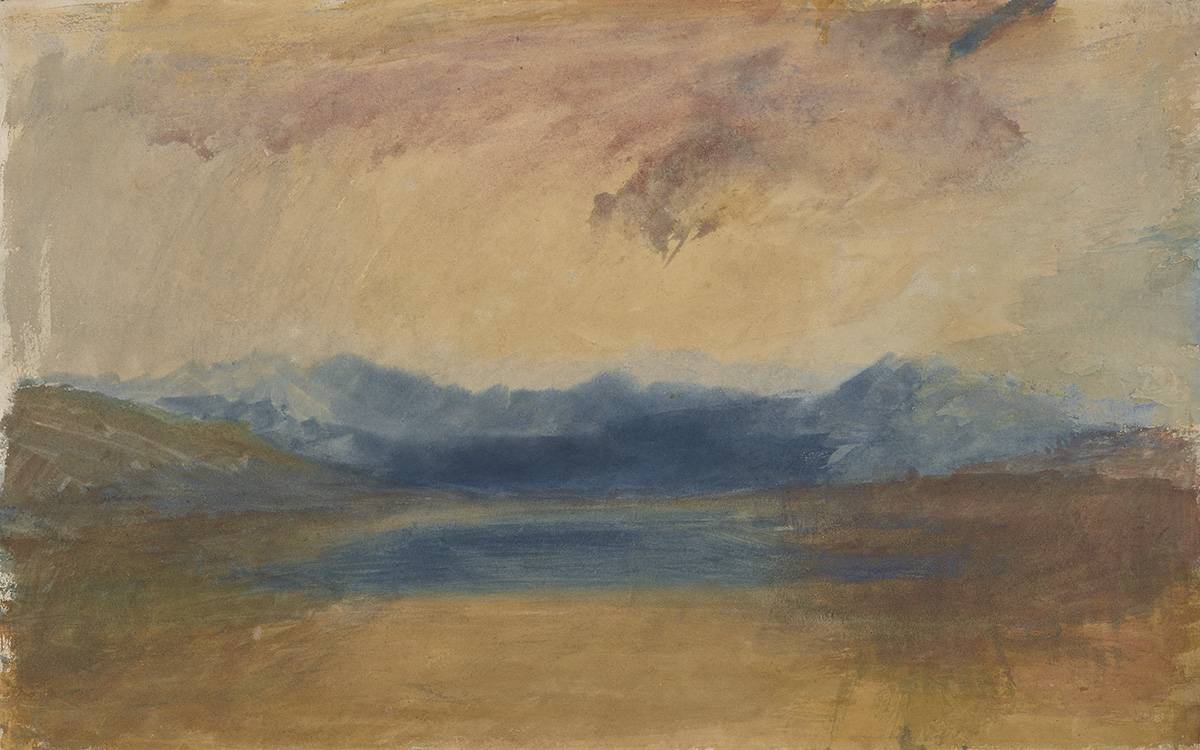Private collection, USA
Evening - looking across a distant lake to mountains
- Watercolour on paper
- 11 ½ × 18 ½ inches · 292 × 470 mm
- Painted c.1831
Collections
- David Croal Thompson (1855-1930);
- Walter Henry Jones (1912-1982) acquired from the above;
- Sotheby's, London, 26 March 1975, lot 216, as ‘A Mountain Lake’;
- C. Curtis, bought at the above;
- Hinderton Trust, Wirral, Cheshire, by 1979;
- Hinderton Trust sale, Sotheby's, New York 24 October 1987, lot 27;
- Agnew's, London;
- Private collection;
- Christie's, London, 8 April 1997, lot 66;
- Private collection USA, to 2023
Exhibitions
- London, Agnew's, 115th Annual Exhibition of Watercolours and Drawings, February-March 1988, no. 73 (as A View from a Height Looking Across a Distant Lake to Mountains Beyond)
Literature
- Andrew Wilton, The Life and Work of J.M.W. Turner, Fribourg, 1979, p. 482, no. 1517 (as Looking towards Brunnen and the Seelisberg from Lake Zug)
